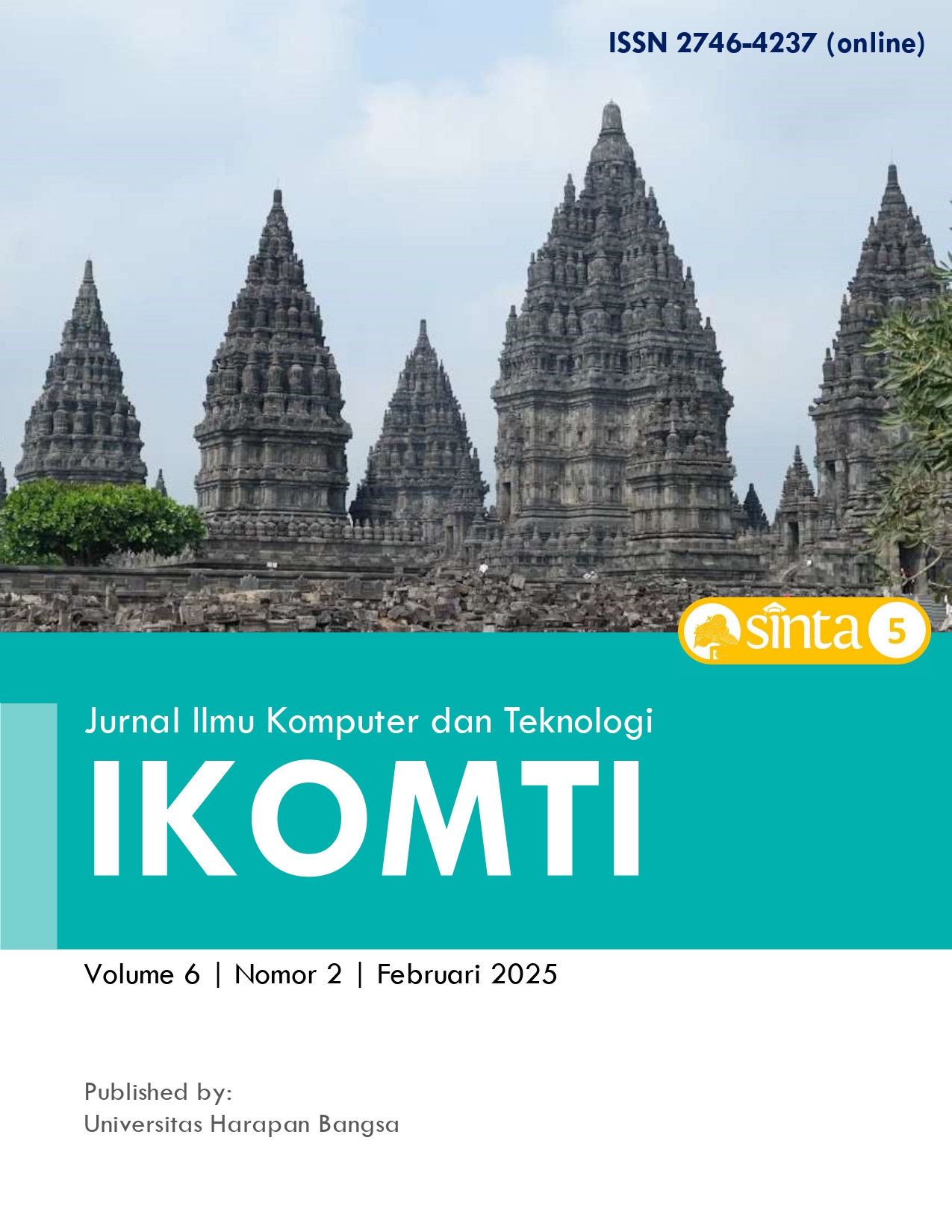Model Sistem Pendukung Keputusan untuk Strategi Pemasaran Digital UMKM Handmade: Sebuah Pendekatan Konseptual Berbasis DEAHP
DOI:
https://doi.org/10.35960/ikomti.v6i2.1865Keywords:
DEAHP, DEA, Handmade MSMEs, Digital Marketing, Decision Support SystemAbstract
Micro, Small, and Medium Enterprises (MSMEs), particularly the handmade crafts sector, are a vital part of Indonesia’s economy with significant potential but face challenges in digital marketing and capital access. This study proposes a Decision Support System (DSS) model combining Analytical Hierarchy Process (AHP) and Data Envelopment Analysis (DEA) to assist MSME actors in selecting effective digital marketing strategies. AHP is used to determine priority weights of key marketing criteria such as cost, market reach, and customer satisfaction. These weights serve as constraints in an input-oriented DEA model to measure the relative efficiency of digital marketing alternatives: social media, marketplaces, and official websites. Optimization results indicate that marketplaces achieve the highest efficiency score (1.00), followed by official websites (0.95) and social media (0.83). With DSS, business owners can develop more targeted and sustainable marketing strategies based on objective data. This DEAHP approach offers a systematic, data-driven framework for decision-making in digital marketing for handmade MSMEs, particularly in Kota Luwuk, supporting enhanced competitiveness and marketing performance. The model serves as a conceptual foundation for further empirical research. The aim of this research is to provide an understanding of how the application of an AHP and DEA-based decision support system can assist SMEs in designing more efficient digital marketing strategies.
References
[1] Kementrian Koperasi dan UKM, “Statistik UMKM Indonesia 2024,” 2024. https://www.depkop.go.id.
[2] A. Suryana, “Pengembangan Industri Kreatif Kerajinan Tangan di Indonesia,” J. Ekon. Kreat., vol. 5(1), pp. 15–27, 2021.
[3] T. Setiawan, B., & Wibowo, “Hambatan Akses Modal pada UMKM Kerajinan: Studi Kasus di Indonesia,” J. Ekon. dan Keuang., vol. 9(3), pp. 210–225, 2023.
[4] Badan Pusat Statistik (BPS), “Statistik UMKM Indonesia 2023,” 2023. https://www.bps.go.id.
[5] Luwuk Post, “Monitoring usaha kerjainan di Kota Luwuk,” Luwuk Post, 2024. .
[6] N. Enteding, A.A., Mangendre, Y., Muhlin, “Revitalization Village Digital Community Space (RKDD) and Establishment of Digital Corner to Realize a Bumi Harjo as a Smart Village,” Dinasti Int. J. Educ. Manag. Soc. Sci., vol. Vol. 6, pp. 1691–1703, 2025.
[7] Antara Sulteng, “Promosi produk lokal di Sulawesi Tengah,” Antara News, 2024. .
[8] S. Rahmawati, “Strategi Pengembangan Pemasaran Digital pada UMKM Kerajinan,” J. Manaj. dan Bisnis, vol. 11(1), pp. 45–48, 2022.
[9] R. Kusuma, D., & Hartono, “Sistem Pendukung Keputusan dalam Mendukung UMKM: Studi Literatur dan Implementasi,” J. Teknol. Inf. dan Komput., vol. 8(2), pp. 123–134, 2021.
[10] R. I. Irfani Zuhrufillah, Farikhin, “Civil servant behaviors performance evaluation: Combining DEAHP and 360-degree feedback,” Int. Conf. Inf. Commun. Technol., pp. 280–285, 2018, doi: 10.1109/ICOIACT.2018.8350691.
[11] I. Zuhrufillah, Metode DEAHP & 360-Degree Feedback: Untuk Evaluasi Kinerja Karyawan atau Pegawai. Jakarta: PENERBIT BUKU INDONESIA, 2025.
[12] T. L. Saaty, The Analytic Hierarchy Process. McGraw-Hill, 1980.
[13] A. Charnes, W.W. Cooper, E. Rhodes, “Measuring the efficiency of decision making units,” Eur. J. Oper. Res., vol. 2(6), pp. 429–444, 1978, doi: doi:10.1016/0377-2217(78)90138-8.
[14] D. Ergu, G. Kou, Y. Peng, and Y. Shi, “A simple method to improve the consistency ratio of the pair-wise comparison matrix in ANP,” Eur. J. Oper. Res., vol. 213, no. 1, pp. 246–259, 2011, doi: 10.1007/s10479-011-0922-3.
[15] T. L. Saaty, Decission Making with Dependence and Feedback-The Analytic Network Process. Pittsburgh: RWS Publications, 1996.
[16] T. L. Saaty, “How to Make a Decission: The Analytic hierarchy process,” Eur. J. Oper., vol. 48, pp. 9–26, 1990.
[17] G. Emrouznejad, Ali., Yang, “A survey and analysis of the first 40 years of scholarly literature in DEA: 1978–2016,” Socioecon. Plann. Sci., vol. 61, pp. 4–8, 2017, doi: doi:10.1016/j.seps.2017.01.008.
[18] P. Kotler., K. L. Keller, Marketing Management, 15th ed. Pearson, 2015.
[19] M. Alavi., D. E. Leidner, “Review: Knowledge management and knowledge management systems: Conceptual foundations and research issues,” MIS Q., vol. 25, no. 1, pp. 107–136, 2013.
[20] C. J. Van Rijsbergen, Information Retrieval, 2nd ed. Butterworths, 1979.
[21] S, Indra., A, Tina., R, Widi., “The Impact of Service Quality on Custumer Loyalty Through Customer Satisfaction of PT Multicom Persada International Jakarta,” Dinasti Int. J. Manag. Sci., vol. Vol. 5 No., pp. 475–485, 2024.
Downloads
Published
How to Cite
Issue
Section
License
Copyright (c) 2025 Irfani Zuhrufillah (Author)

This work is licensed under a Creative Commons Attribution 4.0 International License.













